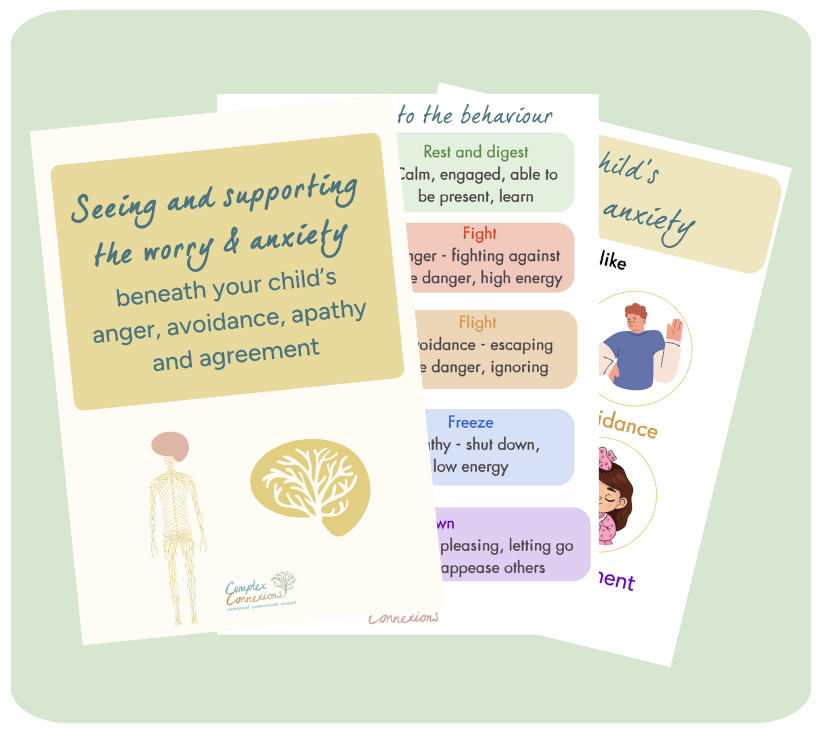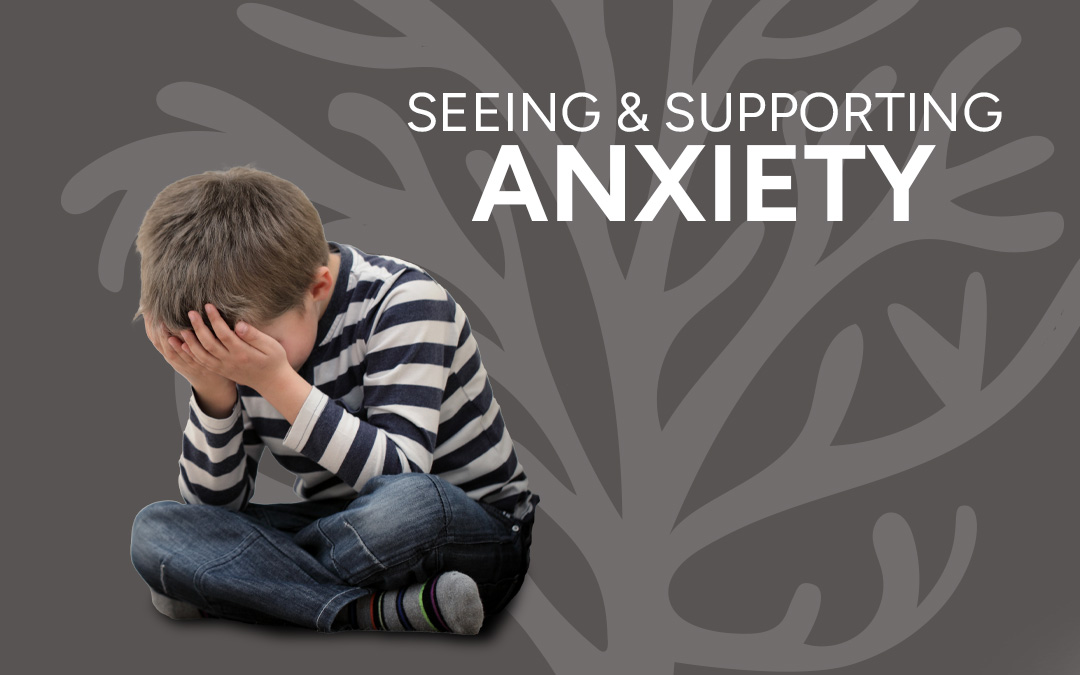See and support your child’s anxiety
Your child’s anxiety might look like behaviour that doesn’t always show that they’re worried about something – it could be shouting, swearing, running away, avoiding tasks, shutting down or people-pleasing.
Find out more about seeing and supporting your child’s anxiety and worry with our free download.


What is anxiety?
Our child experiences anxiety when they have a ‘fear’ of something, it makes them feel unsafe – an environment, a person, a way of doing things…perhaps they’re not even consciously aware of this.
Their brain and nervous system recognise this fear as a threat and so will trigger a change in their body state, to react, so as to protect and defend them. The typical responses of the autonomic nervous system are the fight, flight or freeze responses and another stress response that is becoming better understood, the fawn response.
If we are able to see that all these behaviours may have anxiety and fear beneath them, then we are able to be much more curious and less judgemental of our child and find ways to support their needs in that situation, rather than just trying to manage their behaviour.
How does your child show anxiety?

Fight
When our child’s body tries to fight off the danger, it will be full of energy, aggressive, loud, angry and attacking.

Flight
When our child’s body reacts to flee the danger, it will again be full of energy but now doing everything to get away, to escape, to avoid and hide from the threat.

Freeze
When our child’s body reacts to freeze in order to defend against the danger they feel, they may go into a shutdown mode; with low energy; they may avoid engaging, with little eye contact or speech. They may appear disinterested and even apathetic.

Fawn
Another way that we may see our child responding, and perhaps the one we are least likely to recognise as stemming from fear and anxiety, is when they show nothing but compliance and agreement; they go along with what those around them want, rather than what they, themselves, need in that moment.

Hello, I’m Shelley, the Founder of Complex Connexions CIC.
I was also a teacher, SEN support and am now a tutor. What I discovered in parenting my son, who is ADHD/Autistic, is that when we understand more about our child’s behaviour, we can respond in a more conscious way to meet their needs. This helps them to feel safe and to have more nervous system regulation.
Understanding behaviour through this brain/body lens means we can communicate in a way that supports our child and also ourselves. This builds trust and nurtures our relationship.
And this understanding and communication then allows us to nurture our relationship with our child. And these strong family connections support everyone’s mental wellbeing.


